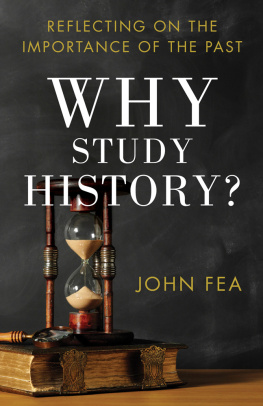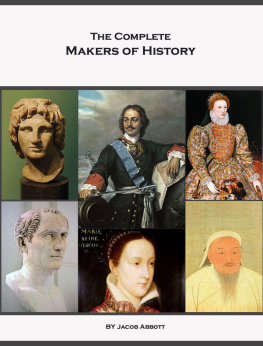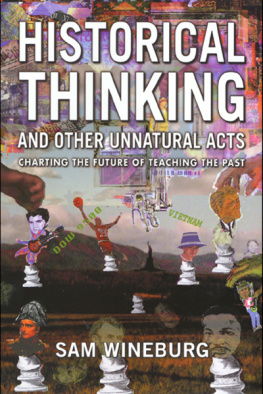

Copyright 1986 by Richard E. Neustadt and Ernest R. May
All rights reserved. No part of this book may be reproduced or transmitted in any form or by any means, electronic or mechanical, including photocopying, recording, or by any information storage and retrieval system, without permission in writing from the Publisher.
The Free Press
A Division of Simon & Schuster Inc.
1230 Avenue of the Americas
New York, N.Y. 10020
www.SimonandSchuster.com
First Free Press Paperback Edition 1988
Printed in the United States of America
printing number
20 19
Library of Congress Cataloging-in-Publication Data
Neustadt, Richard E.
Thinking in time.
Bibliography: p.
Includes index.
1. United StatesPolitics and government
1945Decision makingCase studies. 2. United
StatesForeign relations1945Decision making
Case studies. 3. Decision makingCase studies.
4. Historical models. I. May, Ernest R. II. Title.
III. Title: The uses of history for decision-makers.
E743.N378 1986 350.0072 8529169
ISBN 0-02-922790-9
ISBN 0-02-922791-7 pbk.
eISBN-13: 978-1-45166-762-2
TO BERT
who critiqued the first draft
Contents
The Cuban Missile Crisis of 1962
The Social Security Reform of 1983
Defending South Korea in 1950 The Swine Flu Scare of 1976
The Mayaguez Rescue of 1975 Carters Hundred Days in 1977
Americanizing the Vietnam War in 1965
The Soviet Brigade in Cuba, 1979 Starting Social Security in 1935 The Skybolt Affair of 1962
The Arms Control Initiative of 1977
The Bay of Pigs in 1961
Johnsons Advisers on Vietnam, 1965 Madam Secretary v. Mary Anderson, 1933
Martin Luther King and Malcolm X Helmut Schmidt v. Jimmy Carter Harold Macmillan on Skybolt
Leonid Brezhnev and Colleagues Henry M. Jackson in the Senate Marxism-Leninism and Soviet Economics American Images of Economic Growth LBJ Placing People
The Central Intelligence Agency The Center for Disease Control The Social Security Administration The Office of Planning and Evaluation
Thucydides on the Athenians Minimethods in Staff Work
George C. Marshall Secession, 186061 The Great Crash
Preface
This book is addressed to those who governor hope to do so. It is for men and women elected or appointed to public office. It is also for those who assist them, as aides or bureaucrats, and those who report on them or study them or try to influence them. The purpose of this preface is to make plain what we undertakeand why.
For most of our lives history and governance have fascinated us. We have spent a lot of time wondering how the first might help the second. Since the 1970s we have jointly taught a professional school course labeled Uses of History. Of those who studied with us, only a few were students in the usual sense of the term. Most were men and women sent back to school in midcareer to train for higher assignments. A number were senior officialslegislators, bureau chiefs, colonels, generals, ambassadors, and the likeenrolled in executive programs.
We started the course in part because we sensed around usin our classes, in the media, in Washingtona host of people who did not know any history to speak of and were unaware of suffering any lack, who thought the world was new and all its problems fresh (all made since Hiroshima or Vietnam or Watergate or the latest election) and that decisions in the public realm required only reason or emotion, as preferred. Yet we also saw that despite themselves Washington decision-makers actually used history in their decisions, at least for advocacy or for comfort, whether they knew any or not. We began our course in hope that, with help from government officials doubling as students, we could develop workaday procedures to get more history used better on the job by busy people preoccupied with daily decisions and other aspects of management.
Who taught whom is a nice question. Much of what we say in this book we learned from students, especially ones who called or wrote to tell us how some use of history really worked! Nearly all those who took the course tell us they enjoyed it. More important, they tell us it has helped them do what they are paid to do, namely to make decisions and manage programs. Their testimony gives us hope that this book too can be enjoyed and put to useboth at once.
In every sense of the term the book is co-authored. We taught together, class by class, and have written together, chapter by chapter. It has been a long process. We each wrote half the chapters in our first draft, then swapped them for redrafting with the rule that anything could be changed. Almost everything was. We had a further rule that any changes could be argued. Some were, some not. We carried on the argument by means of successive drafts, with new material subject to the same rules. There were so many swaps that each of us would change something only to be surprised by the others O.K. with me, you wrote it. We debated sources and have argued out interpretations. Not only can we no longer recall who first wrote what, we cannot now remember who first thought whator even who first found what when we jointly researched something. We are of one mind and (we hope) one voice.
Though the book is about uses of history, not history per se, the uses are illustrated by examples taken from history. Some of our readers may be surprised to find that most of the examples come from the 1950s and later, some even from the 1970s and 1980s. Like many of our practitioner-students, they may have been taught to think of history as ending around the time their parents were born, certainly long before they were. Our definition is more literal and catholic, comprehending any happenings of record, down to and including todays headlines.
Our chosen illustrations, being mostly American and mostly from the last four decades, fall within the remembered past for the majority of people now at senior levels in our government. For the successor generation, born in the decade after World War II, some of the events lie in dead spotstoo recent to have been talked about in school but already too distant to have often come up around the home. For still younger men and women just entering professional life, our illustrations are nearly all of that sort. Twenty-two-year-olds have only dim associations, if any, with words or phrases pungent for men or women a decade older. Tet and Watergate are examples; hostages as in Teheran and marines as in Beirut will soon be others. We focus on cases from probable dead spots in part because, as we argue in later chapters, one of historys uses is to understand people whose age, sex, race, nationality, or beliefs are different from ones own. We focus on those cases also because, at our ages, they are meaningful for us, a point to which we shall return.
Most of our illustrations qualify as horror stories. That is not because life is necessarily so. It is partly because reporters prefer to record trouble and discord, partly because memoir writers provide more convincing detail when puzzling out why they did something wrong than when bragging that they did something right. It is also, however, because fully certified horror stories serve our purposes best.
In the majority of our cases participants themselves feel something went wrong. Among such instances are the Bay of Pigs affair, the Americanization of the Vietnam War, Gerald Fords effort to protect the country from a swine flu epidemic that never came, various episodes from the Carter Administration, and the Reagan regimes early misadventure with social security cuts. The individuals who made the key decisions, or at least some of them, looked back and asked, How in Gods name did we come to do
Next page










